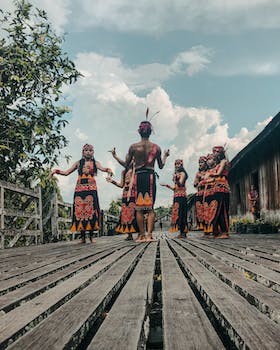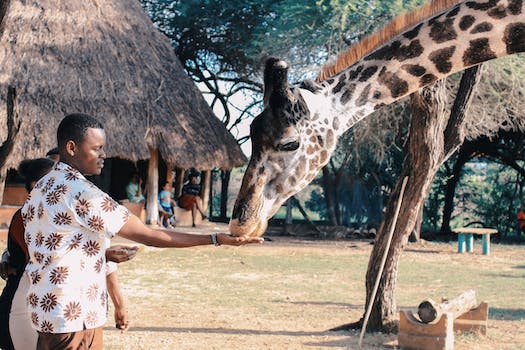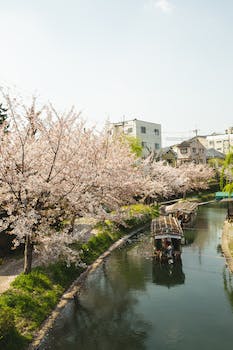

-
Table of Contents
"Uncover the Richness of Indonesia's Cultural Mosaic"
Introduction
Indonesia, a Southeast Asian archipelago, is renowned for its vibrant cultural tapestry. With over 17,000 islands and a diverse population, Indonesia is a melting pot of different ethnicities, languages, religions, and traditions. From the bustling streets of Jakarta to the tranquil villages of Bali, this country offers a rich and diverse cultural experience for travelers. In this article, we will delve into the vibrant cultural tapestry of Indonesia, exploring its traditional arts, music, dance, cuisine, and religious practices. Join us on this journey as we uncover the unique and captivating aspects of Indonesian culture.
Traditional Indonesian Dances: A Glimpse into the Rich Cultural Heritage
Indonesia, with its diverse and vibrant cultural heritage, is a country that never fails to captivate visitors. From its stunning landscapes to its warm and welcoming people, Indonesia offers a unique experience that is both enriching and enlightening. One aspect of Indonesian culture that truly stands out is its traditional dances, which provide a glimpse into the rich tapestry of the country's history and traditions.
Traditional Indonesian dances are a reflection of the country's diverse ethnic groups, each with its own distinct style and significance. These dances are not merely performances, but rather a way of preserving and passing down the cultural heritage from one generation to the next. They are a celebration of the country's history, beliefs, and values.
One of the most well-known traditional dances in Indonesia is the Tari Pendet, which originated from Bali. This dance is performed by a group of young girls, who gracefully move their hands and feet in a synchronized manner. The Tari Pendet is often performed as a welcoming dance, to greet guests and bring blessings to the community. It is a beautiful display of grace and elegance, and a testament to the importance of hospitality in Indonesian culture.
Another popular traditional dance is the Tari Saman, which hails from the Aceh province in Sumatra. This dance is performed by a group of men, who sit in a row and clap their hands, stomp their feet, and move their bodies in a rhythmic manner. The Tari Saman is not only a form of entertainment, but also a means of storytelling. Through their movements, the dancers convey stories of bravery, love, and unity, showcasing the values that are deeply ingrained in Acehnese culture.
The Tari Topeng, or Mask Dance, is yet another fascinating traditional dance in Indonesia. Originating from Java, this dance involves performers wearing masks that represent various characters from Indonesian folklore. The dancers skillfully portray these characters through their movements, bringing the stories to life. The Tari Topeng is not only a visual spectacle, but also a way of preserving the country's mythology and legends.
In addition to these well-known dances, there are countless other traditional dances in Indonesia, each with its own unique style and significance. From the intricate hand movements of the Tari Legong in Bali to the energetic movements of the Tari Piring in West Sumatra, these dances showcase the diversity and richness of Indonesian culture.
Attending a traditional dance performance in Indonesia is an experience like no other. The vibrant costumes, the rhythmic music, and the skillful movements of the dancers all come together to create a mesmerizing spectacle. It is a chance to immerse oneself in the country's cultural heritage and gain a deeper understanding of its people.
In conclusion, traditional Indonesian dances offer a glimpse into the rich cultural heritage of the country. They are not only a form of entertainment, but also a means of preserving and passing down the traditions and values of the Indonesian people. From the graceful Tari Pendet to the energetic Tari Saman, these dances showcase the diversity and vibrancy of Indonesian culture. Attending a traditional dance performance in Indonesia is a truly enriching experience that should not be missed.
Indonesian Batik: Unraveling the Intricate Patterns and Symbolism

Indonesia, with its rich history and diverse population, is a country that boasts a vibrant cultural tapestry. From its traditional dances to its unique cuisine, Indonesia is a treasure trove of cultural experiences. One aspect of Indonesian culture that stands out is the art of batik, a traditional textile that is not only visually stunning but also deeply symbolic.
Batik is a technique of wax-resist dyeing that has been practiced in Indonesia for centuries. The process involves applying wax to fabric, creating intricate patterns and designs, and then dyeing the fabric. The wax acts as a barrier, preventing the dye from penetrating certain areas of the fabric. This results in beautiful, intricate patterns that are unique to each piece of batik.
The patterns found in Indonesian batik are not just random designs; they are imbued with symbolism and meaning. Each pattern tells a story, reflects a cultural belief, or represents a specific region or community. For example, the Parang pattern, with its repeating diagonal lines, is believed to symbolize power and strength. It is often worn by royalty or used in ceremonies to invoke protection and good fortune.
Another popular pattern is the Kawung, which features four circles arranged in a square. This pattern is said to represent the four cardinal directions and is associated with the Javanese royal court. It is often used in traditional ceremonies and is considered a symbol of power and authority.
The symbolism of batik patterns extends beyond just aesthetics. It is a way for Indonesians to connect with their cultural heritage and express their identity. Each region in Indonesia has its own unique batik patterns, reflecting the diversity of the country. For example, the batik from Yogyakarta is known for its intricate designs and vibrant colors, while the batik from Solo is characterized by its simplicity and elegance.
In addition to its cultural significance, batik also plays an important role in the Indonesian economy. It is a major industry, providing employment for thousands of people, particularly women. Many batik artisans work from home, using traditional techniques passed down through generations. The demand for batik has also grown internationally, with people from all over the world appreciating the beauty and craftsmanship of Indonesian batik.
To preserve and promote the art of batik, the Indonesian government has designated October 2nd as National Batik Day. On this day, people across the country wear batik to celebrate and showcase their cultural heritage. The government has also established batik centers and museums to educate the public about the history and significance of batik.
In conclusion, Indonesian batik is a fascinating art form that unravels the intricate patterns and symbolism of the country's cultural tapestry. From its origins as a traditional textile to its status as a global fashion statement, batik has come to represent the rich heritage and identity of Indonesia. Whether worn as a garment or displayed as a piece of art, batik is a testament to the creativity and craftsmanship of the Indonesian people.
Culinary Delights of Indonesia: A Journey through Flavors and Spices
Indonesia, with its rich cultural heritage and diverse population, is a treasure trove of culinary delights. The country's cuisine is a reflection of its history, geography, and the various ethnic groups that call Indonesia home. From the fiery spices of Padang cuisine to the aromatic flavors of Javanese dishes, exploring the culinary tapestry of Indonesia is a journey through a world of flavors and spices.
Indonesia's culinary traditions are deeply rooted in its history. The archipelago has been a melting pot of different cultures for centuries, with influences from China, India, the Middle East, and Europe. These influences have shaped the country's cuisine, resulting in a unique blend of flavors and cooking techniques.
One of the most distinctive features of Indonesian cuisine is its use of spices. The country's strategic location along the ancient spice trade routes made it a hub for the trade of spices such as cloves, nutmeg, and pepper. These spices found their way into Indonesian kitchens, where they were used to create flavorful dishes that are still enjoyed today.
One of the most famous Indonesian dishes is rendang, a slow-cooked beef curry from the province of West Sumatra. Rendang is known for its rich, complex flavors, which are achieved by simmering the meat in a mixture of spices and coconut milk for several hours. The result is a tender, melt-in-your-mouth dish that is bursting with the flavors of lemongrass, galangal, and turmeric.
Another popular Indonesian dish is nasi goreng, a fried rice dish that is often considered the country's national dish. Nasi goreng is made by stir-frying cooked rice with a variety of ingredients such as shrimp, chicken, vegetables, and spices. The dish is typically seasoned with kecap manis, a sweet soy sauce that gives it a distinctively Indonesian flavor.
Indonesia is also known for its street food culture, with bustling markets and food stalls offering a wide variety of snacks and treats. One popular street food is satay, skewered and grilled meat that is served with a peanut sauce. Satay can be made with various meats, such as chicken, beef, or lamb, and is often accompanied by rice cakes and pickles.
In addition to its savory dishes, Indonesia also has a rich tradition of sweet treats. One such treat is klepon, a traditional Indonesian dessert made from glutinous rice flour filled with palm sugar and coated in grated coconut. The combination of the chewy rice cake, sweet filling, and fragrant coconut creates a delightful burst of flavors in every bite.
Exploring the culinary delights of Indonesia is not only a journey through flavors and spices but also a way to connect with the country's vibrant culture. Indonesian cuisine is deeply intertwined with the traditions, customs, and rituals of its people. From the elaborate feasts of traditional ceremonies to the simple pleasures of a street food snack, food plays a central role in Indonesian life.
Whether you're a fan of spicy dishes, aromatic flavors, or sweet treats, Indonesia's culinary tapestry has something to offer everyone. So, embark on a culinary adventure and discover the vibrant flavors and spices that make Indonesian cuisine truly unique.
Q&A
1. What are some traditional art forms in Indonesia?
Traditional art forms in Indonesia include batik, wayang kulit (shadow puppetry), gamelan music, and traditional dance forms such as the Javanese and Balinese dances.
2. What are some popular tourist destinations in Indonesia for cultural exploration?
Popular tourist destinations in Indonesia for cultural exploration include Bali, Yogyakarta, Borobudur Temple, Prambanan Temple, and the cultural villages of Tana Toraja and Ubud.
3. How does Indonesia's diverse cultural heritage contribute to its vibrant tapestry?
Indonesia's diverse cultural heritage contributes to its vibrant tapestry by showcasing a wide range of traditions, languages, customs, and artistic expressions. This diversity creates a rich and dynamic cultural landscape that attracts visitors from around the world.
Conclusion
In conclusion, Indonesia offers a vibrant cultural tapestry that is rich in diversity and heritage. From its traditional dances and music to its unique arts and crafts, the country showcases a wide range of cultural expressions. With its numerous ethnic groups and religious traditions, Indonesia provides a fascinating exploration of different customs, languages, and beliefs. Whether it's visiting ancient temples, experiencing local festivals, or indulging in traditional cuisine, exploring the cultural tapestry of Indonesia is a captivating journey that offers a deeper understanding and appreciation of this diverse nation.












